My VR Journey
by Johnny Cho
- September 4
- in
“OMG! Is it a real?”
That was my first impression of the virtual reality (VR). Since my first experience, I fascinated to watch VR and learn more about it. I have started to spread the VR’s benefits 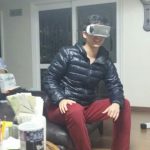 and novelty like a gospel preacher. However, I felt that it was not enough to study by myself. I wanted to learn more about beyond the VR. In order to go school, I needed to persuade my family first. In a first glance, they had no idea what the virtual reality is before I showed them the simulation. I bought the Gear VR to convince them. I still remember the moment that my brother gave an exclamation of surprise. He said, “No way! This is the new world! Johnny”. Then, my mother had the same reaction as my brother did. Fortunately, all my family members who had the first experience of VR had a good response and perspective of VR. Thanks to the magic of VR. With the family support, I was able to go school!
and novelty like a gospel preacher. However, I felt that it was not enough to study by myself. I wanted to learn more about beyond the VR. In order to go school, I needed to persuade my family first. In a first glance, they had no idea what the virtual reality is before I showed them the simulation. I bought the Gear VR to convince them. I still remember the moment that my brother gave an exclamation of surprise. He said, “No way! This is the new world! Johnny”. Then, my mother had the same reaction as my brother did. Fortunately, all my family members who had the first experience of VR had a good response and perspective of VR. Thanks to the magic of VR. With the family support, I was able to go school!
I wanted to learn what we can do by using VR, and what kind of effects they have. Among the schools, I picked up the Syracuse University because of the VR storytelling and measuring learning effects beyond the VR. I think that the most important storytelling technique is empathy. Thus, VR content provider needs to consider how to transfer the news based on the real story to the virtual world. When I saw the 9/11 VR content, I could not stop thinking about how the 9/11 was miserable and terrible. I was not 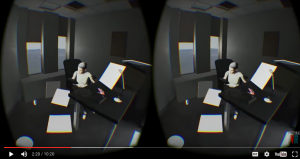 there, but I felt like I am there. After watching VR content, I was so sad that I could not help them out from the fear of terror. It has the presence effect. It is similar feeling when I had a video chat with someone who is in South Korea. I communicate with them and feel them even though we are 5623 miles far away. Thus, making feel ‘being there’ is the foremost element in the VR storytelling, I believe. How can we amplify it in the content?
there, but I felt like I am there. After watching VR content, I was so sad that I could not help them out from the fear of terror. It has the presence effect. It is similar feeling when I had a video chat with someone who is in South Korea. I communicate with them and feel them even though we are 5623 miles far away. Thus, making feel ‘being there’ is the foremost element in the VR storytelling, I believe. How can we amplify it in the content?
I believe that two components are the most important to make an empathy in VR. The first one is audio/sound. The auditory presence takes an important role to move people’s mind. According to a study by Reeves et al. (1993), the quality of auditory information works as a more powerful mean to influence human perception than the quality of visual information does. When I had experience on Oculus Rift with audio in the innovation lab, I felt really being there. I saw the alien in the VR Dreamdeck. When the alien said ‘hi’ to me, I literally almost say hi to him. Why? Because the audio system was almost perfect with head mount display(HMD) tracking. It is called the ‘head-related transfer function (HRTF)’. Depending on my head movement, the sounds on earphone are changed. For example, the alien was in front of me and talked me. If I move my head on right side, my left ear will hear the alien voice louder. The opposite position is same. Thus, in the innovation lab, Oculus rift was my best experience because of the auditory presence.
Another component of the storytelling technique, I think, is interactivity. The innovation lab has the HTC Vive kit which composed with a headset, earphones, controllers, two base 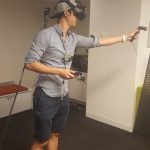 stations, and link box. It was my first time to use the Vive. When I put all gear on, I felt like a cyborg. Even though the headset with wire was little heavy and bother my immersion, overall the Vive has a great interactivity by using controller and base stations. It has 360-degree motion tracking and HD haptic feedback. I experienced the content called ‘science lab’ (I barely remember the exact name). In the scene, I can touch the robot dog by using controllers, also I can walk in the science lab. The Vive sets up the boundary that if I try to walk over the boundary, the Vive shows the grid so that it prevents that people hit the wall. It offers the possible activity space to play interactivity. With movement in the VR, I felt that I can spontaneously touch and choose what I want to paly and make a story, not just seeing one-way news or stories.
stations, and link box. It was my first time to use the Vive. When I put all gear on, I felt like a cyborg. Even though the headset with wire was little heavy and bother my immersion, overall the Vive has a great interactivity by using controller and base stations. It has 360-degree motion tracking and HD haptic feedback. I experienced the content called ‘science lab’ (I barely remember the exact name). In the scene, I can touch the robot dog by using controllers, also I can walk in the science lab. The Vive sets up the boundary that if I try to walk over the boundary, the Vive shows the grid so that it prevents that people hit the wall. It offers the possible activity space to play interactivity. With movement in the VR, I felt that I can spontaneously touch and choose what I want to paly and make a story, not just seeing one-way news or stories.
On the other hand, there are many improvement points in the VR. The length is the better. When I used the google cardboard to my grand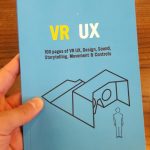 mother and show the 10 minutes’ short drama, she said that it is so dizzy and eyes are tired. In the VR, eye fatigue is a common symptom. Thus, virtual reality user experience (VR UX) is needed to work to enhance the VR experiences. These days, I read the VR UX book. It says that VR is hard to use in the real world because of vision blocked headset. The augmented reality(AR) or mixed reality is the technology to ameliorate this vision problem.
mother and show the 10 minutes’ short drama, she said that it is so dizzy and eyes are tired. In the VR, eye fatigue is a common symptom. Thus, virtual reality user experience (VR UX) is needed to work to enhance the VR experiences. These days, I read the VR UX book. It says that VR is hard to use in the real world because of vision blocked headset. The augmented reality(AR) or mixed reality is the technology to ameliorate this vision problem.
Moreover, Professor Dan Introduced the Microsoft Hololens. It definitely grasps my 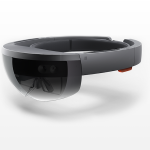 attention. It seems like the improved version of google glass. The funny thing is people wearing Hololens keep moving his/her finger to navigate on the air, but it looks funny because others are seeing him/her that there is actually nothing on the air. I didn’t spend lots of time on the Hololens, but it must be one of the innovative future devices. I am sure that we will widely use Hololens on many industries.
attention. It seems like the improved version of google glass. The funny thing is people wearing Hololens keep moving his/her finger to navigate on the air, but it looks funny because others are seeing him/her that there is actually nothing on the air. I didn’t spend lots of time on the Hololens, but it must be one of the innovative future devices. I am sure that we will widely use Hololens on many industries.
Overall, I had the great experience at the Innovation lab. I saw the bright side of virtual reality after using all different types of VR. However, at the same time, we have many improvement points on the VR as well (e.g., vision block, length matter, motivations, smoothness of head tracking etc.). I really want to use VR not only in the entertainment but also in the education. I do believe that VR in education could serve the profound educational experience and influence the students to have the better education. The virtual reality is the most innovation tool ever! I really enjoyed the VR experiences in the innovation lab. Now, for fulfilling my interest in VR, it is time to focus on VR education storytelling! I cannot wait!
Reference:
Reeves, B., Detenber, B., & Steur, J. S. (1993). New televisions: The effects of big pictures and big sound on viewer responses to the screen. Paper presented at the conference of the International Communication Association, Washington, DC.

COMMENTS